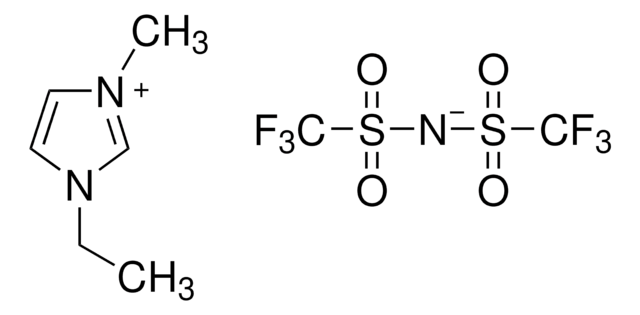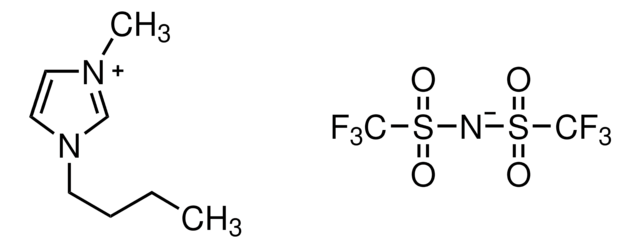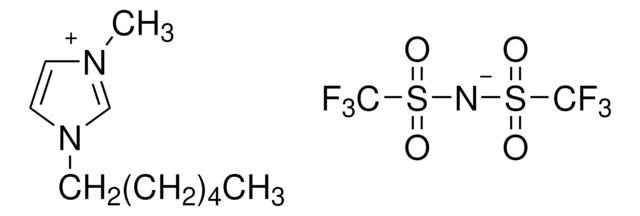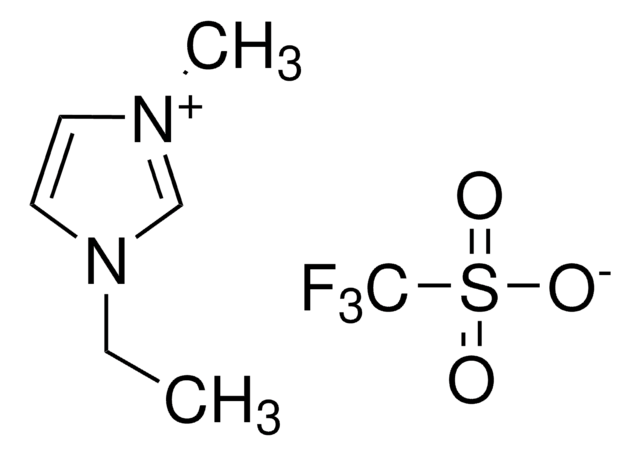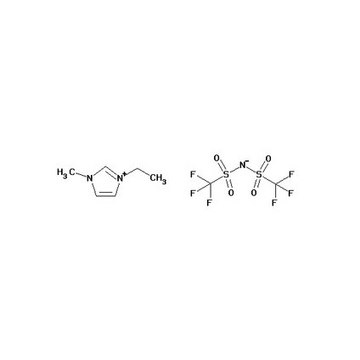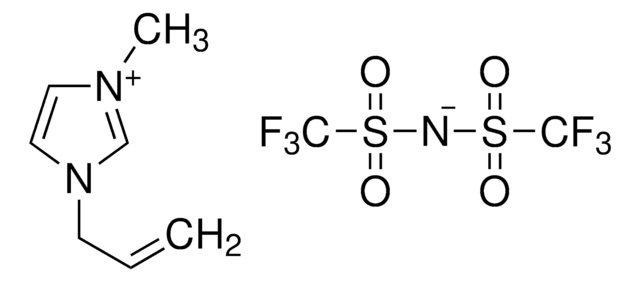900801
1-Ethyl-3-methylimidazolium bis(trifluoromethylsulfonyl)imide
≥99%, H2O ≤500 ppm
Synonym(s):
1-Ethyl-3-methyl-1-H-imidazolium bis(trifluoromethansulfonyl)imide, EMIM BTI, EMIM TFSI, EMIMIm
About This Item
Recommended Products
Quality Level
Assay
≥99%
form
liquid
composition
H2O, ≤500 ppm
impurities
≤500 ppm H2O
mp
≥−15 °C (lit.)
density
1.5236 g/cm3
application(s)
battery manufacturing
SMILES string
CCn1cc[n+](C)c1.FC(F)(F)S(=O)(=O)[N-]S(=O)(=O)C(F)(F)F
InChI
1S/C6H11N2.C2F6NO4S2/c1-3-8-5-4-7(2)6-8;3-1(4,5)14(10,11)9-15(12,13)2(6,7)8/h4-6H,3H2,1-2H3;/q+1;-1
InChI key
LRESCJAINPKJTO-UHFFFAOYSA-N
Looking for similar products? Visit Product Comparison Guide
General description
Application
related product
Signal Word
Danger
Hazard Statements
Precautionary Statements
Hazard Classifications
Acute Tox. 3 Oral
Storage Class Code
6.1C - Combustible acute toxic Cat.3 / toxic compounds or compounds which causing chronic effects
WGK
WGK 1
Choose from one of the most recent versions:
Already Own This Product?
Find documentation for the products that you have recently purchased in the Document Library.
Articles
Solid-state Li batteries: Review of solid electrolytes, ion conduction, structures, and electrochemical processes.
Ionic liquid electrolytes explored for rechargeable batteries' advancement; future IL development discussed.
Our team of scientists has experience in all areas of research including Life Science, Material Science, Chemical Synthesis, Chromatography, Analytical and many others.
Contact Technical Service